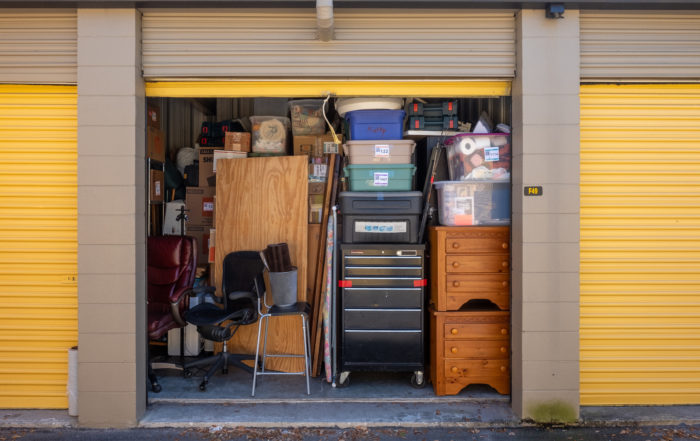Mastering the Art of Furniture Storage: A Comprehensive Guide
Furniture is the soul of our living spaces, but there are times when we need to bid adieu temporarily or make room for new pieces. Whether you’re downsizing, renovating, or just in need of a little extra space, our guide to effective furniture storage will ensure that your beloved pieces are kept in pristine condition until they reclaim their spotlight in your home.
Couch Storage
Thorough Cleaning
Before storing your couch, give it a good cleaning to prevent any stains or odors from setting in during storage. Vacuum the upholstery, treat any stains, and consider using a fabric freshener to keep it smelling fresh. For leather couches, use a leather cleaner to maintain their supple texture.
Disassembly, if Possible
If your couch is modular or has removable legs, consider disassembling it. This not only makes the storage process more efficient but also minimizes the risk of damage during transportation and storage. Remember to keep all screws and small parts in a labeled bag for easy reassembly.
Proper Packaging
Invest in high-quality furniture covers or blankets to protect your couch from dust, dirt, and potential scratches. Avoid using plastic covers, as they can trap moisture and lead to mildew. Opt for breathable materials that provide a protective barrier without suffocating your couch.
Elevate from the Floor
Place your couch on pallets or wooden boards to keep it elevated from the floor. This prevents moisture absorption and protects your furniture from potential water damage. Additionally, it makes it easier to clean around and under the couch during storage.
Climate-Controlled Storage
Consider opting for a climate-controlled storage unit, especially if you’re storing your couch for an extended period. Fluctuations in temperature and humidity can damage upholstery and affect the structural integrity of your furniture. A climate-controlled environment ensures a stable and optimal condition for your couch.
Furniture Storage
Dismantle Large Items
Disassemble large furniture items like bed frames, dining tables, and bookshelves whenever possible. This not only makes them easier to transport but also maximizes storage space. Remember to keep all hardware and assembly instructions organized and easily accessible.
Wrap Fragile Items
For delicate or glass components, such as mirrors or glass tabletops, use bubble wrap or furniture blankets for added protection. Secure the wrapping with tape to prevent shifting during transit and storage. Taking these extra precautions ensures that your fragile furniture pieces remain intact.
Utilize Furniture Storage Covers
Invest in furniture storage covers made from breathable materials like cotton or canvas. These covers provide an additional layer of protection against dust, while still allowing air circulation to prevent mold and mildew. Choose covers that fit snugly without being too tight.
Labeling and Inventory
Keep a detailed inventory of the furniture items you’re storing. Label each piece with a corresponding number and create a comprehensive list. This not only helps during the retrieval process but also ensures that you can easily keep track of all your stored items.
Optimal Storage Unit Organization
When placing furniture in your storage unit, arrange items strategically. Place heavier and sturdier pieces at the bottom and stack lighter items on top. Leave pathways between stacks for easy access and ventilation. This organized approach not only maximizes space but also makes it simpler to locate specific items when needed.
Storage Maximization
Vertical Storage
Take advantage of vertical space within your storage unit. Stack boxes and smaller items on shelving units or utilize the height of the unit for vertical stacking. This prevents wasted space and allows you to store more items efficiently.
Furniture Tetris
Approach furniture storage like a game of Tetris. Stack items in a way that utilizes every nook and cranny, optimizing the available space. Remember to leave pathways for easy access, but don’t be afraid to stack items strategically to make the most of your storage unit.
Use Furniture as Storage
Make your furniture work double duty by using it as additional storage. Place smaller items inside dressers, drawers, or cabinets. Utilize the empty spaces within furniture pieces to store boxes or smaller belongings, effectively maximizing the storage capacity.
Rotate Items
If you anticipate needing access to specific items during the storage period, place them towards the front of the unit. This way, you won’t have to rearrange everything each time you need to retrieve something. Plan your storage unit layout with convenience in mind.
Regular Check-ins
Periodically check on your stored furniture to ensure that everything is in good condition. This not only allows you to address any potential issues promptly but also gives you the opportunity to reorganize and optimize the storage space as needed.
In conclusion, effective furniture storage requires a combination of careful preparation, proper packaging, and strategic organization. By following these tips, you can ensure that your cherished pieces remain in pristine condition, ready to reclaim their place in your home whenever the time comes. Whether it’s a cozy couch or a grand dining table, our guide empowers you to store your furniture with confidence and ease.
Recent Posts
Understanding Self-Storage Lease Terms: What to Know Before You Sign
Renting a self-storage unit is often one of those tasks that feels simple at first—pick a unit, sign a lease, move your stuff in. But if you’re like most people, the fine print on that [...]
What Not to Do When Using a Self-Storage Unit: 9 Common Mistakes to Avoid
Self-storage units are a convenient and affordable way to store everything from furniture and keepsakes to business inventory and seasonal gear. Whether you’re moving, downsizing, or just trying to declutter your space, renting a storage [...]
How to Keep a Storage Unit Clean and Tidy
A self-storage unit can be a lifesaver when you need extra space, but without proper organization and upkeep, it can quickly become cluttered. A clean and tidy storage unit not only makes it easier to [...]



